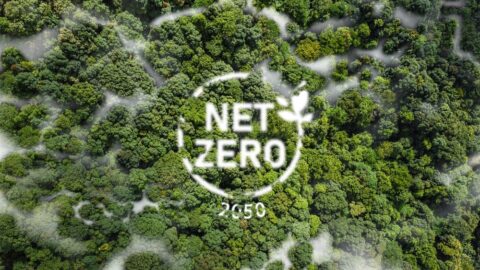The Australian Energy Market Operator (AEMO) has released its Draft 2020 Integrated System Plan (ISP), following extensive consumer, industry and stakeholder engagement.
The Draft ISP acts as an ‘actionable’ roadmap for the efficient development of the National Electricity Market, using forecasts of demand and generation retirements, scenario modelling and comprehensive engineering analysis to develop an optimal development path for Australia’s energy future.
The outcome of this analysis sets out the investment opportunities for the market and targeted transmission augmentation necessary to achieve the best outcomes for consumers.
It aims to ensure Australians enjoy affordable, secure and reliable energy in the coming decades as old generation assets retire and they are replaced with a combination of new technologies and upgraded transmission links.
As in the 2018 plan, the Draft 2020 ISP identifies the investments needed for Australia’s future energy system: in distributed energy resources; variable renewable energy; supporting dispatchable resources and power system services; and the transmission grid.
AEMO’s Managing Director and Chief Executive Officer, Audrey Zibelman, said the Draft ISP both highlights progress since 2018, and lays out future requirements for the energy system to deliver the most cost-effective pathway considering multiple future scenarios for achieving a secure and reliable system that meets consumer needs and government policy objectives.
“We’ve been working collaboratively with the energy sector on an actionable roadmap to manage a smooth transition that maximises benefits and avoids unnecessary costs for Australian consumers,” Ms Zibelman said.
“To maximise economic benefits, as traditional generators retire, Australia must invest in a modern energy system with significant consumer-led distributed energy resources – such as rooftop solar – and utility-scale variable renewable energy, supported by sufficient dispatchable resources and well targeted augmentations to the electricity network.”
To highlight the changes occurring within the power system, the Draft 2020 ISP identifies:
- Rooftop solar capacity is expected to double or even triple, providing up to 22 per cent of total energy by 2040
- More than 30GW of large-scale renewable energy is needed to replace coal-fired generation by 2040, with 63 per cent of Australia’s coal-fired generation set to retire by then
- Up to 21GW of new dispatchable resources are needed to back up renewables, in the form of utility-scale pumped hydro or battery storage, demand response such as demand-side participation, and distributed batteries participating as virtual power plants
- System services including voltage control, system strength, frequency management, power system inertia and dispatchability all need to be managed as the generation mix changes
- Targeted and strategic investment in the grid is needed to balance resources across states and unlock much needed Renewable Energy Zones (REZ)
To manage uncertainty, the Draft ISP uses scenarios and sensitivity analysis, with a central scenario built around existing government policies.
The Draft ISP identifies projects to augment the transmission grid as part of the optimal development plan. These projects fall into three categories, with differing time horizons, to minimise costs and achieve power system needs as the energy system evolves.
Group 1 (Priority projects): These are critical to address cost, security and reliability issues and should be either underway or commencing soon. They include:
- A new 330kv transmission line from Robertstown in South Australia to Wagga Wagga in NSW (EnergyConnect)
- A new interconnection from Western Victoria to southern NSW and Snowy 2.0 to enable energy from the upgraded Snowy 2.0 pumped hydro generators to flow to Victorian towns and cities and to unlock large-scale renewable generation in Victoria (VNI West)
- An upgrade of the existing interconnection from Queensland to NSW (QNI)
- An upgrade of the existing interconnection from Victoria to NSW (VNI)
- A new interconnection from Tumut to Bannaby to reinforce the southern NSW grid (HumeLink)
- Augmentation of the western Victorian transmission system to efficiently unlock renewable generation
- Increasing inertia and fault current in South Australian transmission networks
In addition, AEMO is recommending planning and approvals work begin now for a new transmission link from Tasmania to Victoria (Marinus Link), to ensure it could commence construction by 2023 should that be required, if a variety of contingencies occur including either delays to VNI West or a delay to Snowy 2.0 and an earlier than anticipated Victorian coal plant closure.
Group 2 (Near-term projects): For these projects, AEMO recommends taking action before 2022. A further upgrade to the Queensland-New South Wales interconnector falls into this category.
Group 3 (Future options): These projects provide valuable options for Australia’s future energy system and should be further explored during 2020 and 2021. They are Marinus Link, a larger Queensland to NSW upgrade, a Central to Southern Queensland transmission upgrade, reinforcement of the Gladstone Grid, and reinforcements of the Sydney, Newcastle and Wollongong supply to support the creation of additional renewable energy zones.
“The Draft 2020 ISP sets out how to build a least-cost system for Australia, but for consumers to receive the full benefit of the plan, important additional work on market design and infrastructure funding options needs to be undertaken. At the direction of state and federal ministers, the Energy Security Board is undertaking this work and AEMO looks forward to supporting it,” Ms Zibelman said.
“AEMO thanks the hundreds of stakeholders involved in our engagement program and welcomes continued input leading towards publishing the final 2020 ISP mid next year.”
AEMO’s stakeholder collaboration and consultation will continue until the finalisation of the 2020 ISP in mid-2020.
Written submissions on the content of the Draft ISP are welcome until 21 February and, in relation to non-network options for actionable ISP projects, until 13 March 2020.
To register for invitations to upcoming ISP events, please email [email protected] and visit AEMO’s website for a detailed list of consultation activities.
















